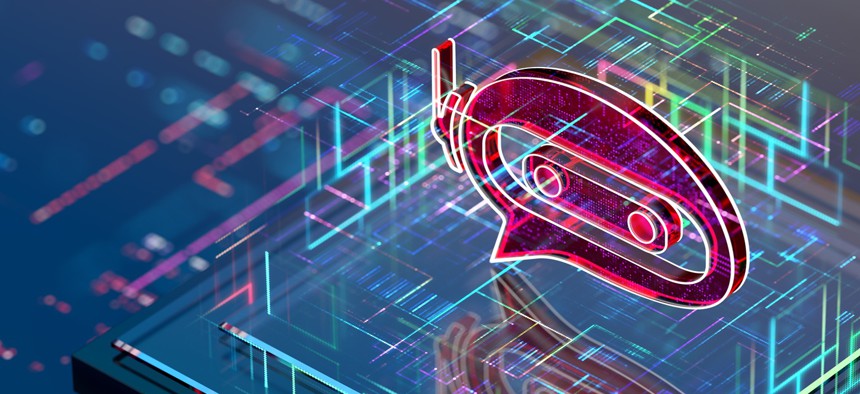
SSA told staff that a new generative AI chatbot is meant to help with content creation and summarization, as well as research and coding assistance. Olemedia/Getty Images
SSA is rolling out a new chatbot for employees
The agency has said that it intends to use technology and AI to make up for workforce cuts.
The Social Security Administration is introducing a new chatbot for employees powered by generative artificial intelligence, according to an internal email obtained by Nextgov/FCW.
“This initiative aligns with our commitment to leverage innovative technology to improve efficiency, support our mission and provide a secured way to use GenAI,” read a Wednesday email to staff announcing the new “Agency Support Companion.”
SSA is the latest to debut such a tool for employees, following similar efforts at the State Department and General Services Administration.
SSA told staff that the new chatbot is meant to help with content creation and summarization, as well as research and coding assistance. Staff have to watch a four-minute video with guidelines and best practices to access it.
The new tool uses an OpenAI model and wasn’t trained or fine-tuned on any SSA data, according to an agency FAQ document obtained by Nextgov/FCW. No testing was done internally to assess the application against SSA-specific questions, it said.
The chatbot was trained on data up to October 2023, according to the FAQ, which also warned that employees should validate its responses and not feed it personally identifiable information.
The tool “is not configured to learn from user interactions” and isn’t connected to other agency applications, but all content will be logged and viewable by the app’s administrators, the FAQ said.
“There are significant opportunities with AI,” said Jack Smalligan, a senior policy fellow at the Urban Institute who previously served as the deputy associate director at the Office of Management and Budget. Smalligan is a co-lead on a new report about how SSA may use AI, especially for determining benefit eligibility for disability insurance and Supplemental Security Income.
One example, according to the report, is that “SSA’s current disability determination process forces many applicants to repeatedly appeal a denial before ultimately being approved for benefits.” Nearly half of initially denied claims that are appealed are later approved, it said.
AI could help organize evidence and tag claims that are likely to eventually be approved as part of an effort to lower appeal rates, the report suggests.
The agency is planning to use technology to fill in the gaps as it cuts thousands of employees, even as the number of beneficiaries seeking help from SSA climbs, according to internal plans reported on by Nextgov/FCW.
The agency is currently planning to cut 7,000 staff from its already historically low workforce.
Staff in SSA’s technology office — currently being led by an associate of Elon Musk’s government-slashing Department of Government Efficiency — have also been warned of cuts. Online, the agency has seen system outages as a result of new anti-fraud checks at the agency.
While AI has potential, there are also risks like bias within systems and the lack of transparency within advanced AI models, the new report noted.
“I'm concerned that the staffing reductions are going to push the agency toward deploying AI tools before they've been adequately evaluated and tested,” said Smalligan.
If you have a tip you'd like to share, Natalie Alms can be securely contacted at nalms.41 on Signal.
NEXT STORY: Trump builds on Biden efforts to modernize permitting technology







